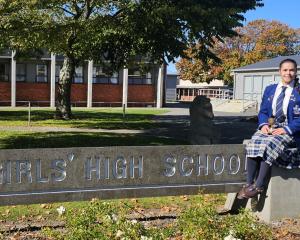The road that kept traffic moving when State Highway 1 was closed at the Rangitata Bridge will have to be sealed — and South Canterbury ratepayers may have to help fund it.
The plan to improve the short but crucial stretch of road came as the Timaru District Council confirmed its share of the flood-time road and bridge response and repair costs might top $800,000.
Arundel Belfield Rd in South Canterbury became the de facto main link along the east coast when the river’s south arm breached its banks, flooding and then closing the highway for several days last week.
The partially unsealed road fed traffic to the Arundel Bridge, a one-way link that helped divert traffic from the flood-affected coastal route to the increasingly congested route inland.
Northbound traffic was channelled over the one lane Orari River bridge on State Highway 79.
About 8.9km of the 13km Arundel route is unsealed.
Before the flood, the low-volume local road was used by about 60 vehicles a day.
During the flood, it was used by about 8000 vehicles a day, Timaru district councillors have learned.
Its unsealed sections required regular top-ups of roading aggregate to ensure a robust and safe driving surface, lengthening travel times for the diverted traffic, infrastructure committee members have been advised.
Their committee will today discuss how to fund work to improve the route, knowing the NZ Transport Agency will keep the main highway open while river flows stay low.
Permanent protection work has yet to be done — which means the unsealed locally-maintained Arundel Belfield Rd will again become the main route should the river rise again.
In a report to the committee, land transport manager Andrew Dixon recommended councillors approve $850,000 to help seal 4.4km of the road between State Highways 79 and 1.
Another up-to $650,000 would be included as a modification to this year’s council budget.
Where the money would come from would be decided when planning for the new financial year but given the plan would improve the overall road network resilience, the NZTA was expected to contribute $416,500 to offset the spend, he said in the report.
The default the NZTA assistance rate was 51%, but the council would ask for more given the importance of the route ‘‘and the inter-regional significance of the detour’’, he said.
Mr Dixon said there was a ‘‘significant amount of road and bridge response and repair costs associated with the Rangitata River flood event’’, and that spend would be partially funded by NZTA.
The local share was estimated to be about $800,000, and the council may have to consider funding it from its disaster relief fund, he said.













